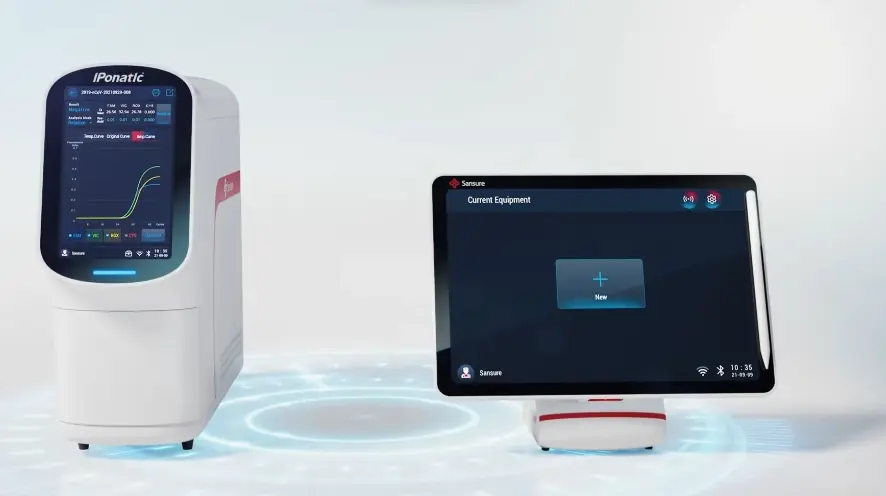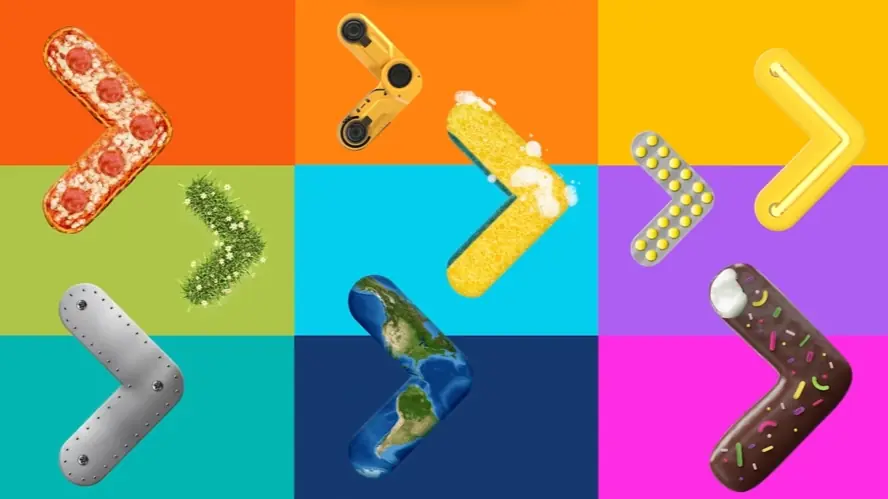Decoding User Behavior Through Video Analytics
Organizations increasingly leverage video for onboarding recognizing its effectiveness streamlining training processes and boosting new user retention particularly vital for remote teams. This approach creates flexible engaging learning paths. While simply tracking play counts offers some insight analyzing user behavior transforms how teams approach crafting a Getting Started Video. Moving beyond basic viewership they uncover deep insights into how new users truly navigate their first product interactions. This deeper understanding fuels continuous improvement cycles ensuring videos resonate effectively.
Decoding user behavior requires looking past vanity metrics. Teams track specific user journeys monitoring clicks navigation paths and time spent on individual steps within the video interface or accompanying product use. Identifying where users experience drop off points precisely pinpoints confusion areas within the content or product flow. Analyzing engagement patterns reveals which sections viewers rewatch for clarity or consistently skip suggesting areas for refinement. Connecting video interaction data with actual user outcomes like successful task completion or feature adoption provides crucial performance context. Integrating video data with learning management systems or HRIS enhances insights across their technology stack. Supplementing quantitative data with qualitative feedback from surveys or interviews adds rich understanding to the numbers.
This data driven approach fuels iterative refinement processes. Teams continuously adapt video content structure and focus based on emerging user insights ensuring ongoing relevance and impact. Advanced strategies explore artificial intelligence for personalized video delivery dynamically adjusting content based on individual user roles or prior knowledge needs. AI powered analytics track performance of these customized experiences providing granular feedback. Real time AI assistance can even trigger helpful videos or tooltips if the system detects user hesitation on a specific feature providing support exactly when needed saving support team time.
Pinpoint exact moments users disengage or seem confused by analyzing drop off points.
Combine quantitative behavior tracking with qualitative user feedback for a complete picture.
Measure tangible impacts like reduced support inquiries or saved team member time.
Explore artificial intelligence capabilities for personalized video experiences and dynamic user support.
Ultimately decoding user behavior through video analytics empowers teams creating more effective supportive onboarding experiences. Continuous refinement based on concrete data ensures videos meet evolving user needs leading greater user confidence and product mastery.
Why Advids for Getting Started Video?
At Advids, we create compelling Getting Started Videos that drive results. Our blend of creative storytelling, advanced technology, and proven experience ensures your vision translates into effective animation. We've completed over 3400 successful projects for clients ranging from startups to Fortune 500 companies, including brands like Razorpay, Ola, Mercedes, the United Nations, Continental, and Mercer. Our commitment to excellence is reflected in over 109 five-star Google reviews.
Why Choose Advids for Your Getting Started Video?
Experience & Expertise: 12+ years of proven success and trusted by industry leaders.
Client-Focused Approach: Collaborative process and strategic communication ensure your vision is realized.
Customized Solutions: Tailored Getting Started Videos that reflect your brand and target audience.
Proven Results: Over 230 successful Getting Started Video projects delivered.
What We Offer:
Creative Storytelling: Captivating narratives that engage viewers and drive action.
Cutting-Edge Technology: Industry-leading software and techniques for visually stunning videos.
Collaborative Partnership: Close collaboration from concept to completion.
Client Satisfaction: Guaranteed excellence, reflected in our numerous five-star reviews.
Ready to unlock the potential of Getting Started Video for your business with the latest video design trends of 2024? Let Advids be your trusted partner in transforming your ideas into engaging and effective animated experiences.
Checkout some of the projects and work our team at Advids has been producing:
What is a Getting Started Video?
A getting started video is a concise and engaging video designed to welcome new users to a product, service, or platform. It acts as a friendly guide, helping users navigate the initial learning curve, understand key features, and feel confident using the product effectively. For example, a software company might create a getting started video that walks users through the initial setup process, demonstrates basic functionalities, and highlights key features.
Getting started videos are particularly useful for products or services that have a learning curve or require users to understand specific features or workflows. They can also be used to introduce new features or updates to existing users.
What do top Getting Started Videos have in common?
Mastering "getting started" videos requires focusing on user needs and showcasing product value clearly and concisely.
Clear Objectives - Define specific, measurable goals for user learning. Prioritize key takeaways.
- User-Centric Approach - Empathize with user struggles; showcase relatable scenarios. Address their needs directly.
- Compelling Visuals - Use high-quality screen recordings with clear annotations. Optimize for clarity and impact.
- Guided User Journey - Use visual cues and on-screen text to guide users. Maintain a smooth, logical flow.
- Feature Spotlights - Focus on the "why" behind each feature. Show its value proposition clearly.
- Pain Point Solutions - Present solutions as direct responses to user problems. Highlight problem-solving efficacy.
- Engaging Narrative - Create a concise, relatable story arc. Connect emotionally with the audience.
- Demonstrable Results - Quantify results whenever possible. Use data to support claims.
- Motivational Call to Action - Provide clear, concise instructions for next steps. Make it easy to get started.
- Real-World Application - Use realistic examples that resonate with the target audience. Show practical value.
What makes Getting Started Video effective?
A truly effective getting started video prioritizes user experience above all else. It begins with data-driven insights derived from user research, pinpointing key pain points and desired outcomes. This information informs a concise narrative that directly addresses user needs and quickly demonstrates value by visually demonstrating problem-solving.
Within the first 60 seconds, the video should present clear, concise steps to achieve the primary user goal. Emphasize one key takeaway per video to avoid overwhelming the viewer. Prioritize visual clarity over complex animations, guiding the viewers eye with visual cues like arrows and highlights. Purposeful visual feedback reinforces positive actions and provides clear indicators of progress.
The video directly addresses the top user frustrations with clear solutions, building user confidence. It prioritizes the most frequently used features, ensuring impactful actions are showcased first. A consistent visual style and branding reinforces brand recognition throughout.
Finally, iterative testing and refinement based on user data ensures continuous improvement and maximum impact. A clear call to action seamlessly guides users to the next step, solidifying the videos effectiveness.
How long should your Getting Started Video be?
Optimize "Getting Started" video length for maximum impact by aligning video type, content, and viewer engagement.
Pre-production Considerations for Determining Video Length:
- What's the video's core message?
- Who is the intended user?
- How many steps need showing?
- What's the product's complexity?
- Where will the video be shown?
- What style best suits the product?
- What's the desired user action?
Getting started video length guide
| Getting Started Types | Video Length | Use Case | Funnel |
|---|
| Explainer Video | 45-60 seconds | Concisely explains core value proposition, using engaging visuals like animation or kinetic typography | Awareness |
| Tutorial Video | 1-2 minutes | Guides users through key features, step-by-step, potentially using screen recording with voiceover | Engagement |
| Onboarding Video | 30-45 seconds | Welcomes new users, highlights key benefits, and encourages exploration, minimalist style works well here | Activation |
| Quick Start Guide/First Steps Guide | 15-30 seconds | Shows the absolute basics, fast-paced montage style, focusing on immediate value and quick wins | Activation |
| Product Walkthrough | 1-2 minutes | Demonstrates core functionality, live-action or screen recording, highlighting key features and benefits | Consideration/Conversion |
How to create Getting Started Videos?
Mastering the art of "getting started" videos requires a strategic approach. Crafting compelling user interface demo videos hinges on understanding your audience and prioritizing clear, concise communication.
* Audience Definition - Deeply understanding user needs shapes the video's content and tone, ensuring relevance and engagement.- Feature Selection - Focusing on core features creates a clear, concise video that avoids overwhelming new users.
- Scriptwriting - A well-written script ensures a smooth, logical flow, maximizing comprehension and user confidence.
- Storyboarding - Visual planning ensures a cohesive video, facilitating efficient production and a polished final product.
- Resource Gathering - High-quality resources ensure a professional, polished video that reflects positively on the product.
- Video Recording - Professional recording techniques create a clear, engaging video that enhances user understanding.
- Video Editing - Smart editing keeps the video concise and engaging, maximizing user retention and comprehension.
- Platform Optimization - Adapting to different platforms ensures broad reach and optimal viewing experience for all users.
- Video Promotion - Strategic promotion increases video visibility, driving user adoption and product awareness.
- Feedback Gathering - Iterative feedback incorporation continuously improves the video, ensuring ongoing relevance and effectiveness.
Creating Accessible Onboarding Videos for Diverse Audiences
Let's talk about making our onboarding videos truly welcoming for everyone. Accessibility isn't just a checkbox; it's about creating an inclusive experience that empowers every user to understand and engage with our product. Imagine a new user excitedly watching your onboarding video, but they're in a noisy cafe. Captions ensure they don't miss a word, demonstrating how small details make a big difference.
Accessibility features like keyboard navigation and adjustable playback speed in onboarding video examples empower users to learn at their own pace and in their preferred way. In website tutorial video examples, clear audio descriptions guide visually impaired users through each step, while captions in introductory video examples make them accessible to a wider audience. When creating product demo video examples, remember that features like color contrast and font size enhance readability for everyone, especially those with low vision.
- Visual Clarity: Choose clear, readable fonts at an appropriate size and maintain sufficient color contrast between text and background.
- Audio Enhancement: Provide captions and subtitles for deaf and hard-of-hearing viewers, and incorporate audio descriptions for visually impaired users.
- Interactive Elements: Ensure all interactive elements are accessible via keyboard navigation and consider including sign language interpretation.
- User-Focused Design: Offer adjustable playback speed, avoid flashing content, and make transcripts readily available.
By prioritizing accessibility, we not only expand our reach but also demonstrate our commitment to creating a positive and inclusive experience for all users. This builds trust and fosters a stronger connection with our audience.
The Importance of a Strong Call to Action in Onboarding Videos
A strong call to action is the bridge between engaging content and tangible results. We've explored various video types, from concise explainers to in-depth tutorials, but without a compelling CTA, our efforts might not translate into user action. Think of it this way: we're offering a valuable product, but we also need to show users the doorway to experience that value.
A well-crafted CTA transforms passive viewers into active users. It's the final nudge that encourages them to explore further, sign up, or make a purchase. For SaaS products, onboarding videos are crucial. Effective saas onboarding video examples often feature CTAs that lead directly to a free trial or product demo. Even short explainer video examples benefit from a clear CTA, guiding viewers to learn more or explore specific features.
- Guide users: Tell them exactly what to do next, whether it's starting a free trial, downloading a resource, or contacting sales. Quick Start Video Examples often use CTAs that encourage immediate action, like "Try it now" or "Get started free."
- Offer incentives: A small reward, like a discount or exclusive content, can significantly boost conversion rates.
- Use action-oriented language: Employ strong verbs like "Get Started," "Join Now," or "Discover More" to inspire action.
- Maintain brand consistency: Ensure your CTA aligns with your overall brand voice and messaging. Product overview video Examples can use CTAs to drive deeper engagement, such as downloading a resource or contacting sales.
By focusing on these key elements, we can create CTAs that resonate with our audience and drive meaningful engagement. A strong CTA isn't just a button; it's the final step in guiding users towards a successful product experience.
Measuring the Effectiveness of Your Getting Started Video
Let's explore how to measure the success of our getting started videos. Evaluating performance helps us refine our approach and ensure we're meeting user needs. Imagine a user abandoning your First Steps Video Examples halfway through. A low completion rate signals a potential disconnect in your content. Or, consider animated explainer video examples with high play rates but low engagement – perhaps the visuals are captivating, but the message isn't resonating.
By understanding these metrics, we can identify areas for improvement and create videos that truly empower our users.
- Completion Rate and Play Rate: These metrics reveal how engaging and discoverable our content is. For app tutorial video examples, a high completion rate suggests viewers find the video valuable from start to finish.
- Engagement and CTR: Beyond views, how long are users watching and clicking? Strong audience retention and CTR signify compelling content and effective calls to action. feature demo video Examples should drive feature adoption, so monitor Feature Usage to see if the video translates into action.
- Conversion Rate and Support Tickets: Ultimately, does the video lead to desired outcomes, like sign-ups or reduced support inquiries? A decrease in support requests related to onboarding suggests the video effectively addresses user questions.
- User Feedback and A/B Testing: Direct feedback and A/B testing provide valuable insights into user experience and help us identify what resonates best with our audience.
By consistently monitoring these metrics, we can refine our getting started videos and ensure they effectively guide users, ultimately leading to a more satisfying product experience.
Optimizing Your Video for Different Platforms and Devices
Creating effective getting started videos means ensuring they're easily accessible, regardless of where your audience watches. Think about it – a beautifully crafted tutorial is useless if it won't load on a mobile device or if the audio is muffled on a tablet. Platform optimization isn't an afterthought; it's integral to maximizing your video's reach and impact.
We need to go beyond just creating great content; we need to tailor that content to fit the specific requirements of each platform. This means considering everything from video dimensions and file formats to captions and interactive elements. Remember, a one-size-fits-all approach simply won't cut it in today's diverse media landscape.
• Mobile Optimization: Prioritize mobile users by designing vertical videos, especially for Tutorial Video Examples. This ensures a native viewing experience on smartphones and tablets.
• YouTube Optimization: For marketing video examples on YouTube, leverage landscape orientation and higher resolutions to maximize visual impact.
• Website Optimization: When embedding software explainer video examples on your website, responsive design is key. Ensure your videos adapt seamlessly to different screen sizes.
• Social Media Optimization: Welcome Video Examples on social media often benefit from shorter lengths and autoplay functionality to grab attention quickly.
Optimizing for different platforms and devices isn't just a technical checklist; it's about creating a seamless and enjoyable viewing experience for every user. By tailoring our approach to each platform, we ensure our getting started videos reach their full potential, effectively guiding users and showcasing the value of our product.
Author & Editor Bio
A video producer with a passion for creating compelling video narratives, Jai Ghosh brings a wealth of experience to his role. His background in Digital Journalism and over 11 years of freelance media consulting inform his approach to video production. For the past 7 years, he has been a vital part of the Advids team, honing his expertise in video content planning, creation, and strategy.
His collaborative approach ensures that he works closely with clients, from startups to enterprises, to understand their communication goals and deliver impactful video solutions. He thrives on transforming ideas into engaging videos, whether it's a product demo, an educational explainer, or a brand story.
An avid reader of modern marketing literature, he keeps his knowledge current. Among his favorite reads from 2024 are "Balls Out Marketing" by Peter Roesler, "Give to Grow" by Mo Bunnell and "For the Culture" by Marcus Collins. His results-driven approach ensures that video content resonates with audiences and helps businesses flourish.




